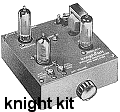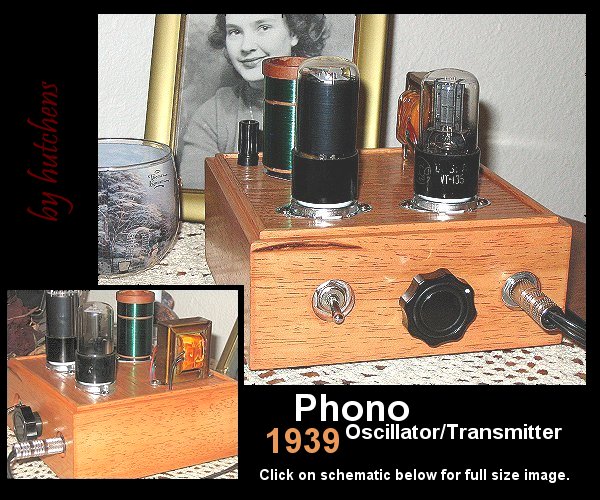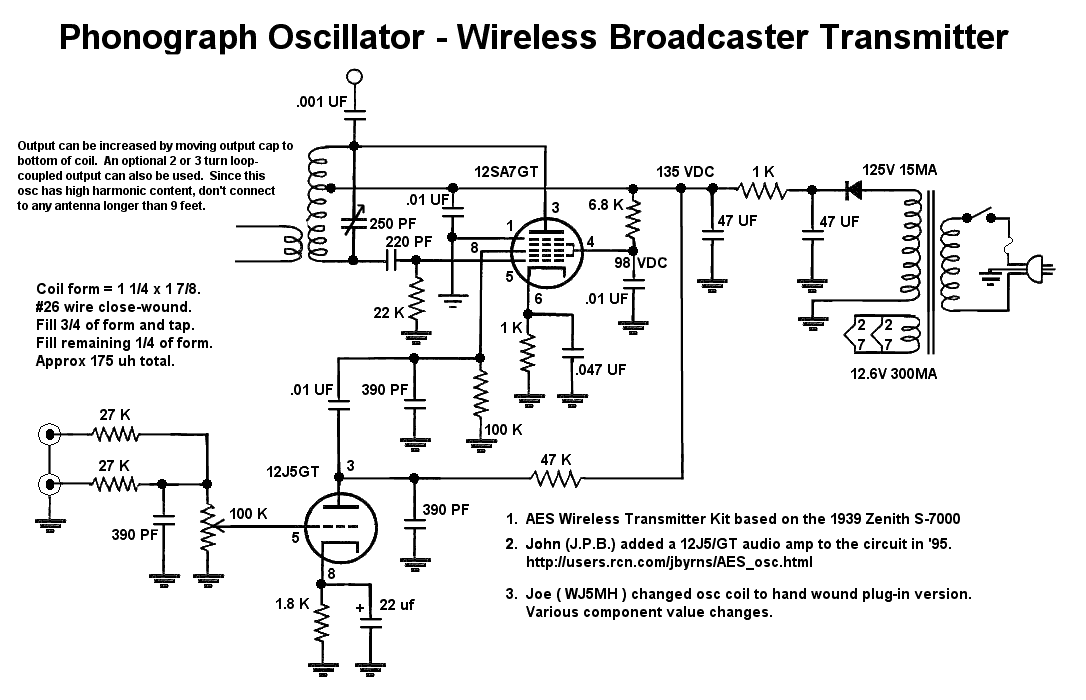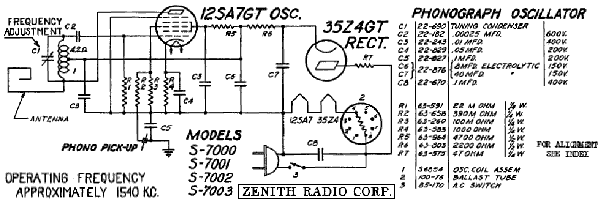Broadcast Band AM Transmitter/Phono Oscillator
 Since I haven't done any research on Phono
Oscillators, I can only assume that they were simply used to connect phonograph players to radios.
For those not wanting to modify their radios for a direct phono input connection, this was the easy way
to go.
Since I haven't done any research on Phono
Oscillators, I can only assume that they were simply used to connect phonograph players to radios.
For those not wanting to modify their radios for a direct phono input connection, this was the easy way
to go.
The oscillator on this page is based on the 1939 Zenith S-7000 series, but a few additions and changes
have been made to the original "transmitter" circuit. (Both schematics are attached.)
In the late 50's and early 60's, many young boys used a similar version of this wireless broadcaster to
play DJ, and broadcast music to nearby homes. I was no different.
 The one I used was sold in kit form
by Allied Radio/Knight Kit. (Lafayette also sold one that was a very similar design.)
The one I used was sold in kit form
by Allied Radio/Knight Kit. (Lafayette also sold one that was a very similar design.)
Our little neighborhood broadcaster "Serving North Marquette" used the callsign WKOA and transmitted near
700 kHz. "We make 100 milliwatts sound like a million!"
The radio station was a professional operation (?) with dual turntables and a real microphone. I
was News Director and can still remember pulling the weather report from the daily newspaper, and running
upstairs to check the latest temperature.
This 1939 Zenith S-7000 series radio copy from Antique Electric Supply is simple to build, and works as
expected for its intended design. It won't blast a signal around the house, but it will give good
audio on nearby receivers.
Since this is a simple oscillator, it does transmit harmonics, so don't use this stock version connected
to any outside antenna. Limit your antenna wire to about 9 feet, and keep it close to the target
receiver.
I've seen three versions of the Zenith phono oscillator. Two were mounted on a wood chassis
(including mine), and one was mounted on a metal chassis. Mine was actually a shipping container
for candles. It seemed a shame to dump it in the trash when I could put it to good use.
What you don't see in the picture are three strips of wood added to the top of the box. This gives
the top some added strength and a nice inlaid look.
One word of caution. Always be aware that lethal voltages are present on tube gear. Always
unplug the radio and check for stored voltage from the power supply capacitors before attempting to
service the transmitter.
Have fun with your project.
Joe (AJ8MH) ex: WPE8EUM, WN8AQL, WB5FCO and WJ5MH












